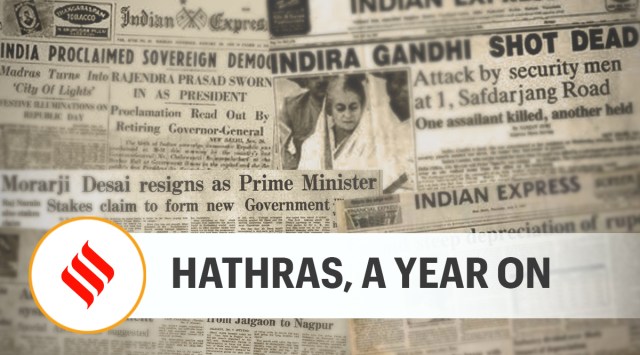- India
- International
The horror in Hathras exists on a continuum of impunity
The plight of the Dalit victim’s family speaks of a larger abandonment
 According to a report in this newspaper, the Dalit family has been forced into a life of ostracism and stigma.
According to a report in this newspaper, the Dalit family has been forced into a life of ostracism and stigma.A year ago, a young Dalit woman in Hathras, Uttar Pradesh, was gangraped; her body forcibly cremated in the dead of the night by the police against her family’s wishes — another chilling moment in the long, shameful history of sexual violence against women in India. The spectacle that followed was disquieting still. Opposition politicians were stopped by the UP government from entering Bool Garhi village and meeting the family; the police arrested four upper-caste men for the crime but senior officials denied it was rape till they could deny it no more; the Yogi Adityanath government arrested journalist Siddique Kappan on the way to report the crime, and charged him under the UAPA. A year later, the political dust has settled. No politicians line up to meet the family in Bool Garhi village. If the rape of the 19-year-old woman underlined the double vulnerability of Dalit women to sexual violence, caste lines have been drawn with more vigour in its aftermath. According to a report in this newspaper, the Dalit family has been forced into a life of ostracism and stigma.
The horror in Hathras exists on a continuum of impunity. It recalls the violence of Khairlanji and the December 16, 2012 assault in Delhi, and echoes across multiple violations of Indian women at home and outside — the most recent instance being that of the woman brutalised in Saki Naka, Mumbai. The protests against the gangrape of a young paramedic in a moving bus in Delhi in 2012 were a milestone, not only for the anger and anguish of generations of women on the streets of Delhi, but also the examination of the sexist underpinnings of many aspects of social life that it inspired. It led to the revolutionary charter of the Justice Verma Committee report, which recommended a review of AFSPA and the criminalisation of marital rape, exempting neither the state nor family from its scrutiny. That counsel was as good as binned. Instead, wary of anger against sexual violence turning into volatile political mobilisation, governments have chosen to double down on a narrative of harsher punishment and death penalty. In contrast, the more difficult work of speeding up trials or establishing fast-track courts or addressing the vulnerabilities of “lower-caste” women or working to expand the substantial freedoms of women, rather than cage them in a narrative of safety, has not even been attempted.
In the absence of such institutional fixes, families such as the one in Hathras are left to fend for themselves — and wait for closure and justice.
This editorial first appeared in the print edition on September 16, 2021 under the title ‘Hathras, a year on’.
EXPRESS OPINION
More Explained
Apr 19: Latest News
- 01
- 02
- 03
- 04
- 05
































